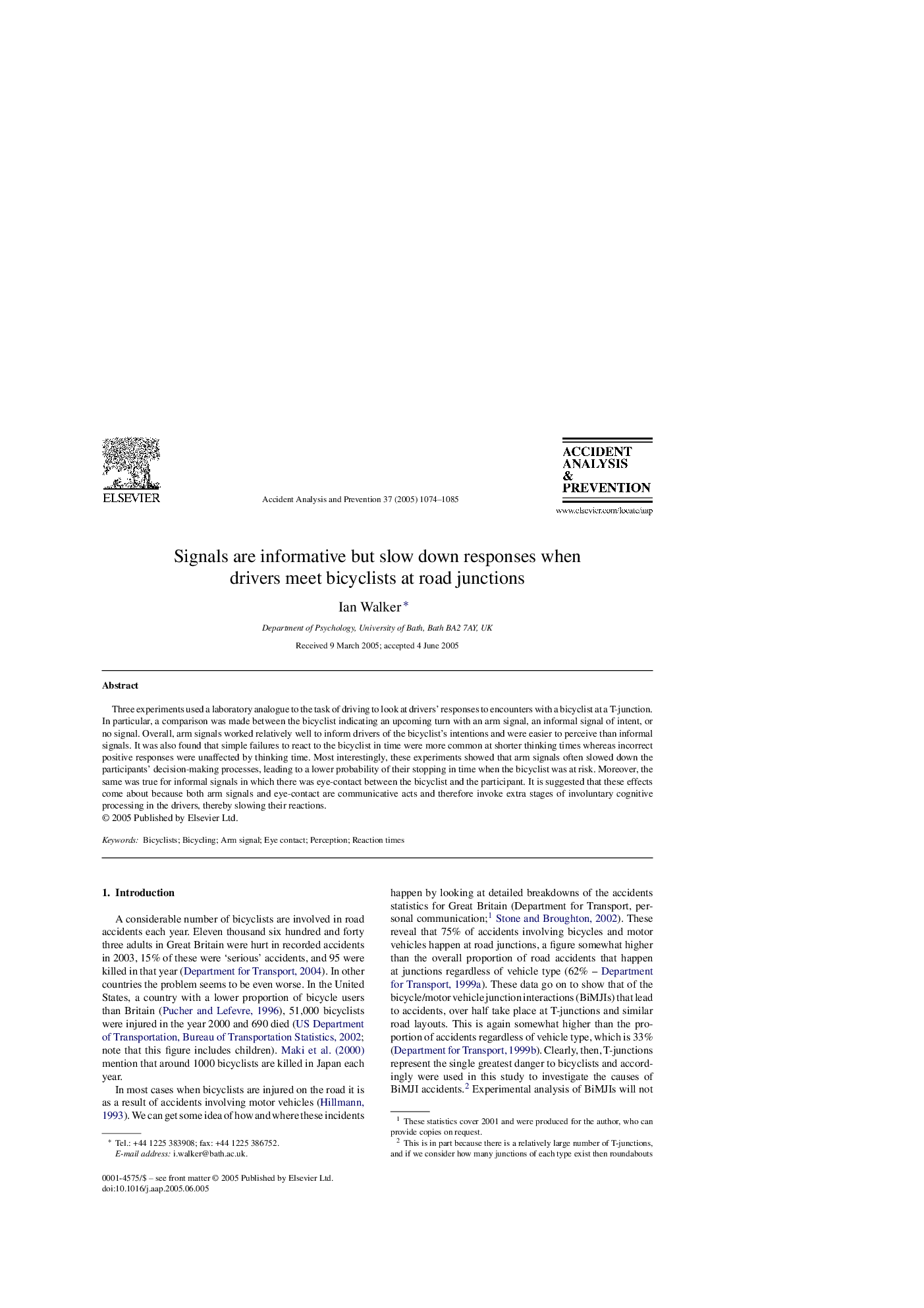| Article ID | Journal | Published Year | Pages | File Type |
|---|---|---|---|---|
| 10371565 | Accident Analysis & Prevention | 2005 | 12 Pages |
Abstract
Three experiments used a laboratory analogue to the task of driving to look at drivers' responses to encounters with a bicyclist at a T-junction. In particular, a comparison was made between the bicyclist indicating an upcoming turn with an arm signal, an informal signal of intent, or no signal. Overall, arm signals worked relatively well to inform drivers of the bicyclist's intentions and were easier to perceive than informal signals. It was also found that simple failures to react to the bicyclist in time were more common at shorter thinking times whereas incorrect positive responses were unaffected by thinking time. Most interestingly, these experiments showed that arm signals often slowed down the participants' decision-making processes, leading to a lower probability of their stopping in time when the bicyclist was at risk. Moreover, the same was true for informal signals in which there was eye-contact between the bicyclist and the participant. It is suggested that these effects come about because both arm signals and eye-contact are communicative acts and therefore invoke extra stages of involuntary cognitive processing in the drivers, thereby slowing their reactions.
Related Topics
Physical Sciences and Engineering
Chemical Engineering
Chemical Health and Safety
Authors
Ian Walker,
